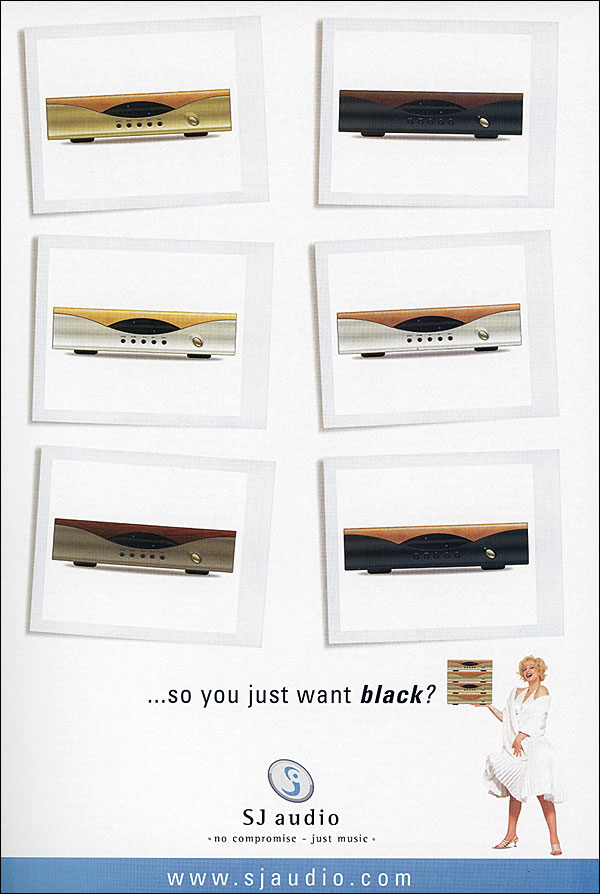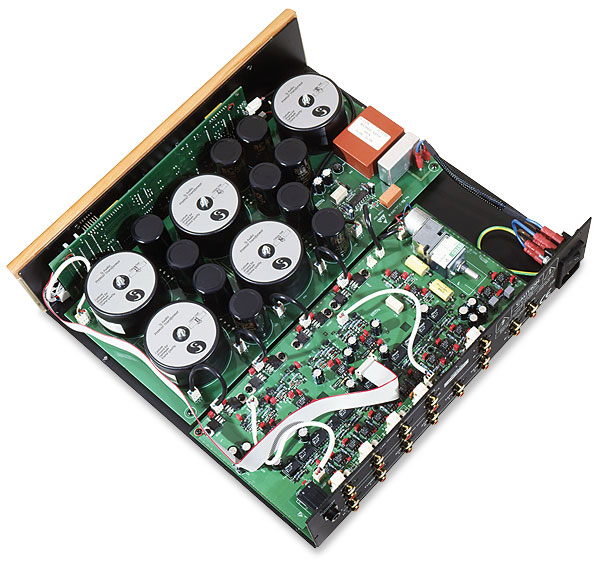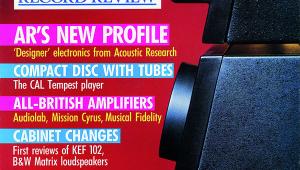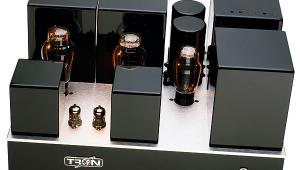Samuel Johnson Audio Page 2
ppa100 Power Amplifier
The power amp takes the reduction of residual noise and interchannel crosstalk to near obsessive lengths. The former is encouraged by the use of star grounding and the latter given a headstart by the simple expedient of constructing the units as two completely separate power amplifiers in the one cabinet.
This division extends even to the use of two large screened, custom-wound 300VA toroidal mains transformers, one per channel. The two amplifier circuits are, of course, identical, each built on a single PCB that runs the length of the cabinet and is mounted on standoffs behind its associated heatsink. Each channel has 40,000pF of reservoir capacitance in the form of four BHC Aerovox electrolytics with incoming mains subjected to an EMC filter.

Mains input is via a switched, fused three-pin IEC socket and the signal inputs are on gold-plated phonos. Loudspeaker outputs employ Speakon connectors. Although well-known in professional circles, these are still rare on domestic products. The locking plug-to-socket fitting is obviously very secure but I have to say that the actual cable-grips are nothing to write home about, the wire retained by side-entry grub screws in familiar 4mm plug fashion. Bi-wiring is readily achieved, though, because the grips are doubled-up within the plug.
Quality Control
The amplifier is fully protected against DC offset, short-circuit and over-temperature. As with the preamplifier, it is normally left powered on and brought in and out of standby from a push-button located on the fascia. Again this has a bi-colour LED tell-tale. Two other LEDs, one per channel, show red at switch-on and turn green after a couple of seconds once the supply has settled and the amplifier's relays un-mute.
The power amplifier provides a gain of 32dB and is rated at 50W per channel into 8ohm, providing a doubling into 4ohm. With its massive power supplies, it is clearly capable of delivering very high instantaneous current levels and it takes but a short period of listening to establish that it exerts phenomenal control.
![]() Invisible Touch
Invisible Touch
Used in tandem, or individually in the context of other systems, these two units proved to be truly outstanding, virtually transparent to the signal. Employed together between a 508 24 CD player from Meridian and a pair of Quad ESL-63 speakers the combination provided extraordinary definition, conveying an astonishing amount of detail – every strand in the musical fabric, every subtlety of timing in complex textures in perfect order.

It's rude to point, but there's a precision of focus here which has one singling out individual performers in a complex score simply because they are now so tangible – perfectly integrated yet also discrete. There's a special delicacy in the tonal balance too, which is both silky-smooth and wide open at the frequency extremes. A key factor is the exceptionally quiet, 'black' background; low-level detail is perceived that much more clearly when there's not even the vaguest hint of a blemish on the canvas.
Criticisms? Well nothing's perfect, of course, and though I can find nothing to fault in the sonic performance, ergonomically the preamp is a little idiosyncratic in the way its Listen and Record selectors simply cycle through the six source options.
One Love
What this means is a single jab if you are going from CD (Input 1) to Tuner (Input 2), but if you then want to go back to CD you need to press the button five more times. As there is no delay in the actual switching, other sources which happen to be active will be heard momentarily in passing, which can certainly be irritating.
Where the preamp's fascia offers separate buttons for Listen and Record selection, the delightful little solid aluminium handset has just one, cleverly combining both functions in conjunction with its Mute button. With the mute off the Selector button cycles through the Listen inputs in the normal way; when muted it cycles through the Record output sequence. This means that you cannot change the Record settings via the handset without interrupting a source you are auditioning, not, perhaps, that it matters very much at all!

The only other limitations, to my way of thinking, are the lack of any visual indication of the volume setting along with the preamplifier's insistence on returning to CD for both Listen and Record at switch-on, regardless of the last-used choice. Oh, and because the input names are printed on the display window and the LED indicators are set a little way back, viewing the unit from an angle can line up the right LED with the wrong legend. But now I'm being too pernickety, for on the whole I've rarely been so impressed with an amplifier combination, so confident that in all key aspects it performs flawlessly.
Conclusion
I had less time than usual to prepare this review but have nevertheless spent a disproportionately large amount of it simply listening to disc after disc, drawn in by sheer involvement in a wide range of music and musical types. My primary interest is in classical music but I found myself trawling through my idiosyncratic collection of non-classical favourites as well, fascinated by myriad small details that had scarcely registered before but which were now plain to hear.
'No compromise – just music', the Samuel Johnson company motto goes, a lofty aspiration but to my mind reached by these truly excellent units. If there is any justice, they should surely fare well.
























































